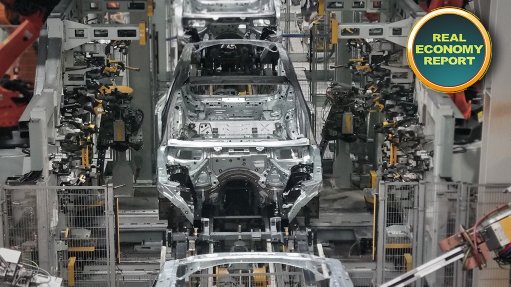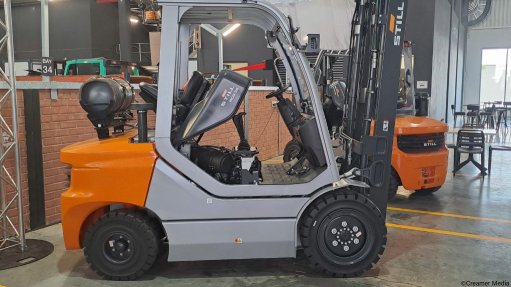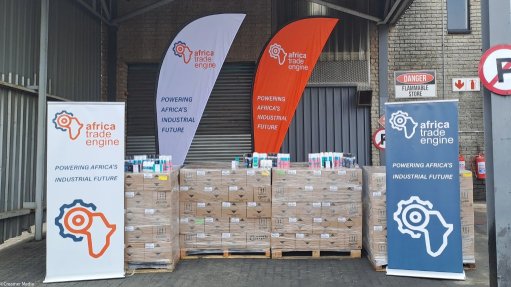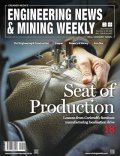Solar’s Second Act
This article has been supplied.
By: Sakhile Ngcongwane - Business Development Manager at SolarAfrica
As the energy landscape shifts and policy signals grow increasingly mixed, many are questioning whether solar still holds value – particularly for large energy users in the commercial and industrial (C&I) sectors.
The short answer? It does, but its role is evolving.
With loadshedding having seemingly abated – and with the carbon tax all but ignored in the recent National Budget, you’d be forgiven for thinking that solar – and more broadly, renewable energy – are less of a national priority these days.
This is largely down to the fact that South Africa’s carbon tax, designed to curb greenhouse gas emissions by making polluters pay, seems to have been stalled by corporate lobbying.
Phase 1 of the carbon tax, introduced in 2019, allowed companies to avoid paying for up to 95% of their emissions, rendering the tax largely toothless. In November 2024, Treasury’s Phase 2 proposal sought to change that, introducing tougher measures for 2026–2030, including higher tax rates (up to R462 per tonne of CO₂ by 2030), reduced allowances, and penalties for exceeding carbon budgets.
Yet at the 2025 Budget, several earlier proposals were quietly set aside. Tax-free allowances were extended to 2030, and stricter penalties did not materialise.
You can bet your bottom kilowatt that geopolitical volatility is making it easier to bury such reversals. Consider the United States where the clean energy boom – spurred by Biden’s Inflation Reduction Act – could come to a halt if the new administration repeals it. Experts warn this would cripple solar, wind and EV projects, endanger jobs and diminish America’s global competitiveness. And of course, when the tide turns in the US, these currents ripple worldwide.
Despite this – or perhaps, in light of this (depending on how you look at it) – I would argue that there’s a very strong business case to be made for solar. However, the renewables landscape has matured significantly since its toddler years, and while today solar might have less value as a standalone solution for energy-intensive sectors, it has become a vital part of a diversified energy mix.
Consider that while the noise around South Africa’s tax might be somewhat muted (for now), the European Union’s Carbon Border Adjustment Mechanism (CBAM) is set to raise the stakes. CBAM imposes a carbon price on certain goods imported into the EU, ensuring that foreign producers meet the same climate standards as EU-based companies. For local exporters, this means that from January 2026, if a product’s emissions are high and not covered by equivalent carbon pricing in SA (read: our weak carbon tax), it could face steep tariffs.
Aside from solar’s green benefits and providing greater energy security when coupled with a battery (which was its primary appeal in the darkest days of loadshedding), it’s also a fantastic cost-saver for businesses. By producing energy onsite – especially during peak hours when tariffs are highest – businesses reduce their reliance on expensive utility supply, avoid peak demand charges, and gain greater control over long-term energy costs.
However, Eskom’s new, recently implemented Retail Tariff Plan (RTP) has shifted the goalposts somewhat; RTP restructures how electricity is billed by introducing higher fixed charges (like capacity and network costs) and lowering the variable rate per kilowatt-hour. For high-energy users in the C&I space, this means greater cost predictability but reduced savings from self-generation, like solar. Even if a business consumes less from the grid, they’ll still pay for being connected. While this supports grid maintenance, it places pressure on businesses to manage demand carefully and optimise energy use to remain cost-efficient.
This is where there is a strong case to be made for energy stacking; offsetting these changes while retaining control and predictability for the end-user. Energy stacking offers a smart, resilient approach for energy-intensive sectors looking to cut costs and carbon. By combining multiple sources – like solar for self-generation and savings, battery energy storage systems (BESS) for reliability, and wheeling to secure power at scale (without physical limitations such as rooftop space) – businesses can optimise supply and usage while reducing reliance on the grid. Energy trading further enables flexibility by allowing companies to buy or sell surplus power.
This diversified mix not only delivers cost savings and energy security, but also improves sustainability credentials – making it easier to comply with future carbon regulations and meet increasingly stringent environmental, social, and governance (ESG) standards.
It’s no longer about a few rooftop panels. Solar isn’t new – but the way we’re using it now is. The future lies in layering: combining energy sources and technologies to lower costs, boost resilience and stay ahead of regulation. C&I leaders who act now to build flexible, diversified energy structures won’t just cut carbon – they’ll gain a long-term competitive edge.
Article Enquiry
Email Article
Save Article
Feedback
To advertise email advertising@creamermedia.co.za or click here
Comments
Announcements
What's On
Subscribe to improve your user experience...
Option 1 (equivalent of R125 a month):
Receive a weekly copy of Creamer Media's Engineering News & Mining Weekly magazine
(print copy for those in South Africa and e-magazine for those outside of South Africa)
Receive daily email newsletters
Access to full search results
Access archive of magazine back copies
Access to Projects in Progress
Access to ONE Research Report of your choice in PDF format
Option 2 (equivalent of R375 a month):
All benefits from Option 1
PLUS
Access to Creamer Media's Research Channel Africa for ALL Research Reports, in PDF format, on various industrial and mining sectors
including Electricity; Water; Energy Transition; Hydrogen; Roads, Rail and Ports; Coal; Gold; Platinum; Battery Metals; etc.
Already a subscriber?
Forgotten your password?
Receive weekly copy of Creamer Media's Engineering News & Mining Weekly magazine (print copy for those in South Africa and e-magazine for those outside of South Africa)
➕
Recieve daily email newsletters
➕
Access to full search results
➕
Access archive of magazine back copies
➕
Access to Projects in Progress
➕
Access to ONE Research Report of your choice in PDF format
RESEARCH CHANNEL AFRICA
R4500 (equivalent of R375 a month)
SUBSCRIBEAll benefits from Option 1
➕
Access to Creamer Media's Research Channel Africa for ALL Research Reports on various industrial and mining sectors, in PDF format, including on:
Electricity
➕
Water
➕
Energy Transition
➕
Hydrogen
➕
Roads, Rail and Ports
➕
Coal
➕
Gold
➕
Platinum
➕
Battery Metals
➕
etc.
Receive all benefits from Option 1 or Option 2 delivered to numerous people at your company
➕
Multiple User names and Passwords for simultaneous log-ins
➕
Intranet integration access to all in your organisation


















